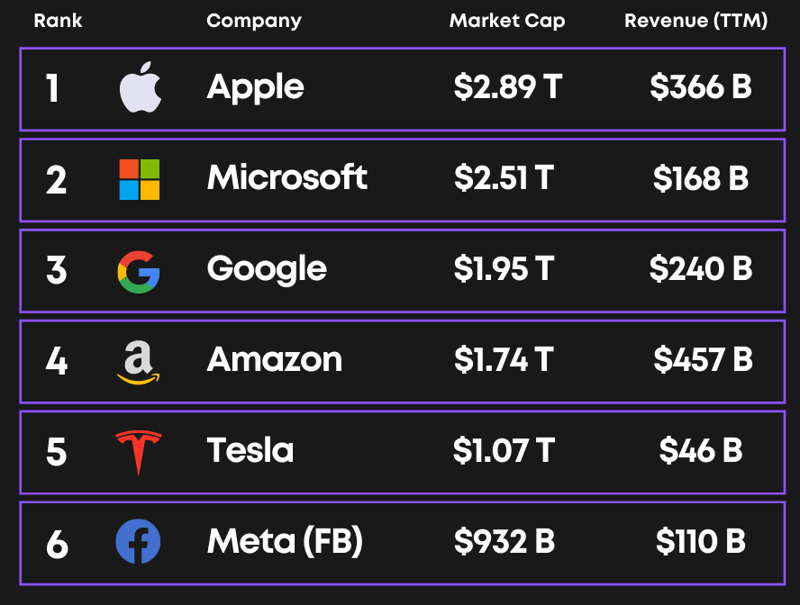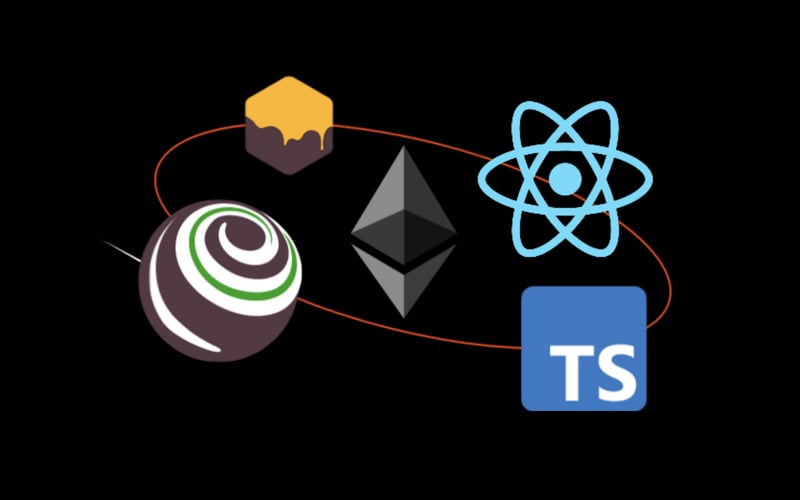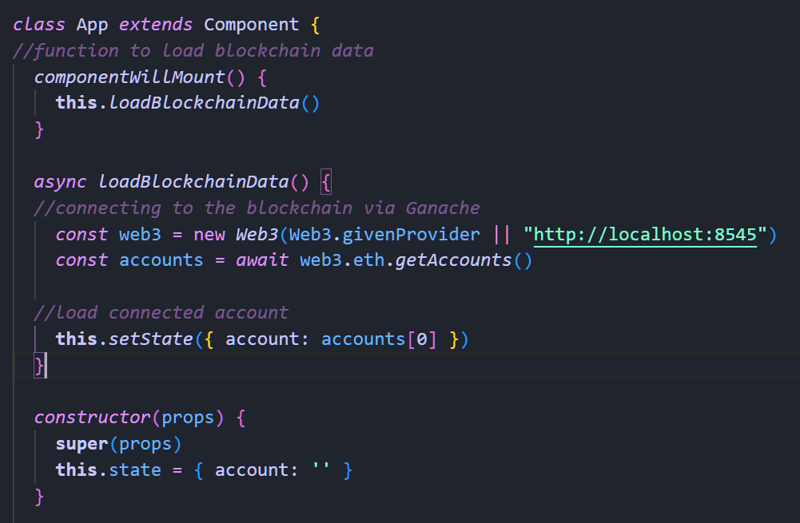The Heart of Web 3.0

𝙉𝙚𝙨𝙨𝙖 𝙆𝙤𝙙𝙤
Posted on September 19, 2022

Decentralizing the internet is at the heart of Web 3.
As new technologies and systems continue to rapidly emerge, it is essential to understand why decentralization is so important.
The cornerstones of Web 3 are built on ideas of user ownership, and transparency. The goal of establishing this new phase of the internet is intended to end our collective reliance on a handful of tech giants while reducing the amount of control that any one company can have over the internet moving forward.
As reported by according to the analysis by Emergen Research...
The Web 3 market size was $3.2 billion in 2021 and is forecasted to reach $81.5 billion in 2030, growing at a CAGR of 43.7%
Though this is only one analysis taken into scope, I truly believe that the future will make great strides towards the developments currently being built in the Web 3 space, and I think it would be greatly beneficial for us all to contemplate how we might like to be a part of this technological and artistic renaissance...
as builders, creatives, and visionaries.
The world of Web 3 has truly changed my life, and so many experiences have shaped my path in ways I could have never anticipated. From selling Jake Paul my own digitized artwork, to working as a community manager for a 10,000 piece NFT collection, I have gotten the chance to understand many realms within this new evolution of the web, and the fire within my heart to both pursue it and to help build it, grows stronger every day.
Following 3 weeks of learning to create React apps from scratch at Flatiron School, I have been greatly inspired to continue building upon my budding software engineering skills, and will actively work towards learning the fundamentals of what will enable me to become a strategic and intentional blockchain developer.
I entered the Web 3 space in early 2021, and since then have only come to see more and more each day the endless possibilities in which our societal frameworks could re-establish themselves for the betterment of our collective future. This will be the first of a few posts simply overviewing some of the information I have found to be integral to truly understanding the Web 3 space, and will always do my very best to perpetuate the idea of decentralization -- even if all hope of a truly decentralized future may not be feasible on a global scale.
What is Web 3.0? 💱
Web3 is the metamorphosis of the world wide web. It includes, but is not limited to the realms of NFTs, blockchains, DAOs, the metaverse, and crypto.
Despite the growing awareness of Bitcoin and Ethereum, along with the emergence of new categories like DeFi, NFTs, GameFi and DAOs, blockchain developers represent less than 1% of the 31.1M software developers globally.
Facilitating the ease of use and interaction with decentralized apps (dApps) on a global scale where all blockchain networks are interlinked may require extra steps and more engagement, but many will see it as a worthwhile and necessary effort.
The Web Evolution 🌱
Web 1.0 - Information (Past)
In this initial version of the web, a user was only able to read the content of news sites, portals, search engines etc.
The Web 1 era was highly decentralized for a couple of reasons:
Low bandwidth infrastructure (up to 1Mbps)
Underdeveloped infrastructure went hand-in-hand with simple coding practices. Everyone could learn HTML or copy a template to deploy a website
Web 2.0 - Interaction (Present)
In the late 2000s, ventures such as YouTube and Netflix were able to scale as they delivered streamed content to the mass market.
In essence, Web 2 is the merger of Server-side (programs executed on a server) and Client-side (programs executed in a browser) programming, with web browser languages as the starting point.
Development stacks that have shaped the world as we know it today:
These programming layers made it possible to create dynamic web content, sandwiched between the Client-side and Server-side.
- Web browser stack: HTML, JavaScript, CSS
- Advanced Server-side and Client-side stack: PHP, JavaScript, Ruby, Python, Java
- Server-side web frameworks: Django, Ruby on Rails, Laravel, etc.
Web 2 was built upon ideas of raising capital and the traditional management of business, leading to centralization and the network effect. Even if someone could clone Twitter, the value of Twitter is not in its software, but in the number of people using it.
Ultimately, this reality is what has brought about the reign of large tech giants in which many of us have indirectly become reliant on.
Example: Google.
(where it started) search engine start-up
(where it is today) ad integration and monetization, news aggregation, video-sharing, payment rails, AI, robotics, and smartphones
In the end, Web2 turned into an expansive ecosystem made up of a handful of organizational nodes. These nodes make it convenient to interact with the world, but centralized companies control the nodes and can change their policies whenever they like, inevitably leading to the lack of user ownership and transparency we so desperately need today.
Web 3.0 (The Future)
A year after the Great Recession of 2008–09, Bitcoin emerged as peer-to-peer (P2P) digital money, its genesis block directly referencing bank bailouts.
Bitcoin emerged as an alternative to central banking.
Bitcoin’s blockchain technology laid out the groundwork for what Web 3 is built upon.
After all, if money can be made both digital and decentralized, it is a layer that can easily be integrated into the internet.
Essentially, Web 3 mirrors Bitcoin, in the ways that it is a permission-less, trustless, and decentralized way of generating content, distributing it, and owning it.
Web3 is in many ways a continuation of Web2 in terms of interactivity, but at the bottom of the stack is a blockchain protocol.
On top of the blockchain protocol are four layers that bind blockchain to the end-user experience:
- Smart contracts
- Web3 libraries
- Nodes
- Wallets
These layers offer the same Web2 functionality, but with decentralized monetization, funds/data ownership, and censorship-resistant content.
Building the Future 🛠️
Given a brief overview of the evolution many of us have seen the Web emerge as, the time is now here to ideate, create, and further implement projects and organizations that can fuel us all to embrace a future where ownership is ours, and transparency bolsters ethical business practices.
Just a few months ago when I happened to be living in Silicon Valley working for a Web 3 social media startup, I quickly came to learn how many resources are becoming more and more readily available for developers to access and utilize as they craft software and applications for this new sphere of the Web. I was lucky to encounter some developer friends in my time living there who greatly encouraged me to learn React and Solidity to build dApps.
In future posts, I will make a point of delving deeper into the core fundamentals of the technology that Web 3 has emerged from, as well as the up and coming changes from which blockchain development will only become easier and more accessible. For the remainder of this post however, a few of the key factors in which I will touch upon include a bit about the blockchain, and the data that is stored on it.
What is Blockchain? 🔗
At its core, a blockchain is a public database of transactions
Blockchains themselves are pretty straightforward. They offer a public record which stores a history of transactions between parties, and this information can be accessed by anybody.
1) Immutability
A blockchain is append-only. Once data has been written, it can't be changed (known as immutability).
2) Validation
A blockchain takes the form of a linked-list instead of a table. That is, every set of transactions (known as a block) that is added to the blockchain must point to the previous block.
That way, there's a linear history of every transaction that has ever occurred the blockchain.
3) Decentralization
Because blockchains are decentralized - they're not owned by any particular organization, and can't be taken down in the same way as a regular database.
There are two primary forms of data that are stored on the blockchain:
Cryptocurrencies and Smart Contracts
Cryptocurrency
Cryptocurrencies are basically digital currencies that can be exchanged online as a form of payment for goods and services.
Crypto differs from traditional digital payment methods in a variety of ways:
1. Instead of having to register on a financial platform, anyone in the world can access and transfer cryptocurrency directly. Users don't need to worry about their assets being frozen or controlled by a third party.
2. Financial platforms are regulated by governments, and require personal data to use their services as a result. Cryptocurrencies allow transferring ownership without necessitating proof of identity.
3. As a result, market value can vary wildly, based on expectations for the project or blockchain tech as a whole. Volatility is very important in understanding which crypto investments are more risky or stable than others.
Smart Contracts
Smart contracts offer those who interact with them:
1) Immutability: Because smart contracts are immutable, an entity cannot change the agreement for personal gain. There is no possibility of a third party altering data on the blockchain
2) Transparency: Smart contracts are published to the blockchain, and can be read and written by anyone who has access to the blockchain.
3) Simplicity: Because smart contracts are expensive to deploy onto the blockchain and contain sensitive logic dictating the flow of financial transactions, they tend to be much smaller and simpler than most codebases.
If you're a JavaScript developer and want to explore writing your own smart contract, you may want to get familiar with Solidity. This is the most popular smart contract language and it's syntactically similar to JavaScript, which may make it easier to learn.
The best place to start to understand the fundamentals of blockchain is the Ethereum and Solidity documentation.
I have only begun to experiment with using Solidity in conjunction with React, but have included a React snippet here to show what the starter code for an app to display your connected Web 3 wallet would consist of.
Initializing the relevant library
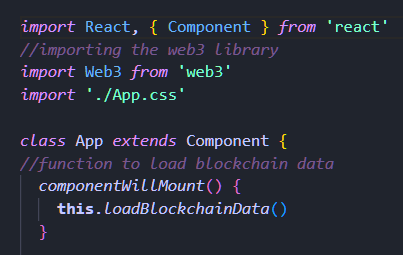
Establishing the state of the connected account
And the return that would render your data...
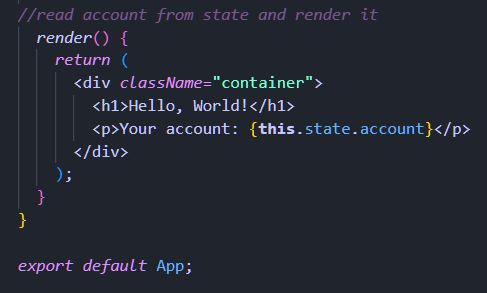
With some additional code and configurations, you can easily build a simple dApp that would allow you to build a blockchain-based todo list powered by Ethereum smart contracts on the blockchain.
If you are interested into diving into creating a react dApp for yourself, check out this resource for an in depth guide.
A smart contract is a mechanism involving digital assets and two or more parties, where some or all of the parties put assets in, and assets are automatically redistributed among those parties according to a formula based on certain data that is not known at the time the contract is initiated.
— Vitalik Buterin, Co-Founder of Ethereum
Simply put, a smart contract is an if/when … then that is written into code. Two parties agree on certain terms that are translated to code and then added to the blockchain. Smart contracts automatically execute whenever a certain condition is met making them efficient.
Metamorphosis 🦋
Web 3 offers up a plethora of new opportunities for individuals from all circles of life.
This is likely just the start of many posts on this topic, as the heart behind this evolution of the Web has changed my life for the better in so many ways.
My biggest goal as a developer is to share the fire within me that is my dedication to promoting the idea of decentralization, a future being built, operated, and owned by its users.
Rather than continuing to rely on a structure monopolized by large technology companies, the future of what this new evolution of the Web offers *puts power back into our hands as individuals, rather than corporations. *
I hope that in some way, this has sparked a flame within you to consider a new perspective, and I appreciate you taking the time to take a step within my mind. If you have any questions, or would like to be in touch, feel free to message me, or comment below.
Instagram Twitter Opensea Discord
ʕっ• ᴥ • ʔっ Thanks for reading!
Love,
NESSA KODO

Posted on September 19, 2022
Join Our Newsletter. No Spam, Only the good stuff.
Sign up to receive the latest update from our blog.


